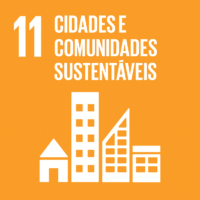Ciência_Iscte
Publicações
Descrição Detalhada da Publicação
2020 12th International Symposium on Communication Systems, Networks and Digital Signal Processing (CSNDSP)
Ano (publicação definitiva)
2020
Língua
Inglês
País
Estados Unidos da América
Mais Informação
Web of Science®
Esta publicação não está indexada na Web of Science®
Scopus
Google Scholar
Esta publicação não está indexada no Overton
Abstract/Resumo
Non-orthogonal multiple access (NOMA) concatenated with multiple-input multiple-output (MIMO) or with massive MIMO, has been under scrutiny for both broadband and machine-type communications (MTC), even though it has not been adopted in the latest 5G standard (3GPP Release 16), being left for beyond 5G. This paper dwells on the problems causing such cautiousness, and surveys different NOMA proposals for the downlink in cell-centered systems. Because acquiring channel state information at the transmitter (CSIT) may be hard, open-loop operation is an option. However, when users clustering is possible, due to some common statistical CSI, closed-loop operation should be exploited. The paper numerically compares these two operating modes. The users are clustered in beams and then successive interference cancellation (SIC) separates the power-domain NOMA (PD-NOMA) signals at the terminals. In the precoded closed-loop system, the Karhunen-Loève channel decomposition is used assuming that users within a cluster share the same slowly changing spatial correlation matrix. For a comparable number of antennas the two options perform similarly, however, while in the open-loop downlink the number of antennas at the BS is limited in practice, this restriction is waived in the precoded systems, with massive MIMO allowing for a larger number of clusters.
Agradecimentos/Acknowledgements
--
Palavras-chave
Downlink,Linear inter-cluster cancellation,Non-orthogonal multiple access,Successive interference cancellation
Classificação Fields of Science and Technology
- Engenharia Eletrotécnica, Eletrónica e Informática - Engenharia e Tecnologia
Registos de financiamentos
| Referência de financiamento | Entidade Financiadora |
|---|---|
| UIDB/EEA/50008/2020 | Fundação para a Ciência e a Tecnologia |
Contribuições para os Objetivos do Desenvolvimento Sustentável das Nações Unidas
Com o objetivo de aumentar a investigação direcionada para o cumprimento dos Objetivos do Desenvolvimento Sustentável para 2030 das Nações Unidas, é disponibilizada no Ciência_Iscte a possibilidade de associação, quando aplicável, dos artigos científicos aos Objetivos do Desenvolvimento Sustentável. Estes são os Objetivos do Desenvolvimento Sustentável identificados pelo(s) autor(es) para esta publicação. Para uma informação detalhada dos Objetivos do Desenvolvimento Sustentável, clique aqui.

 English
English



